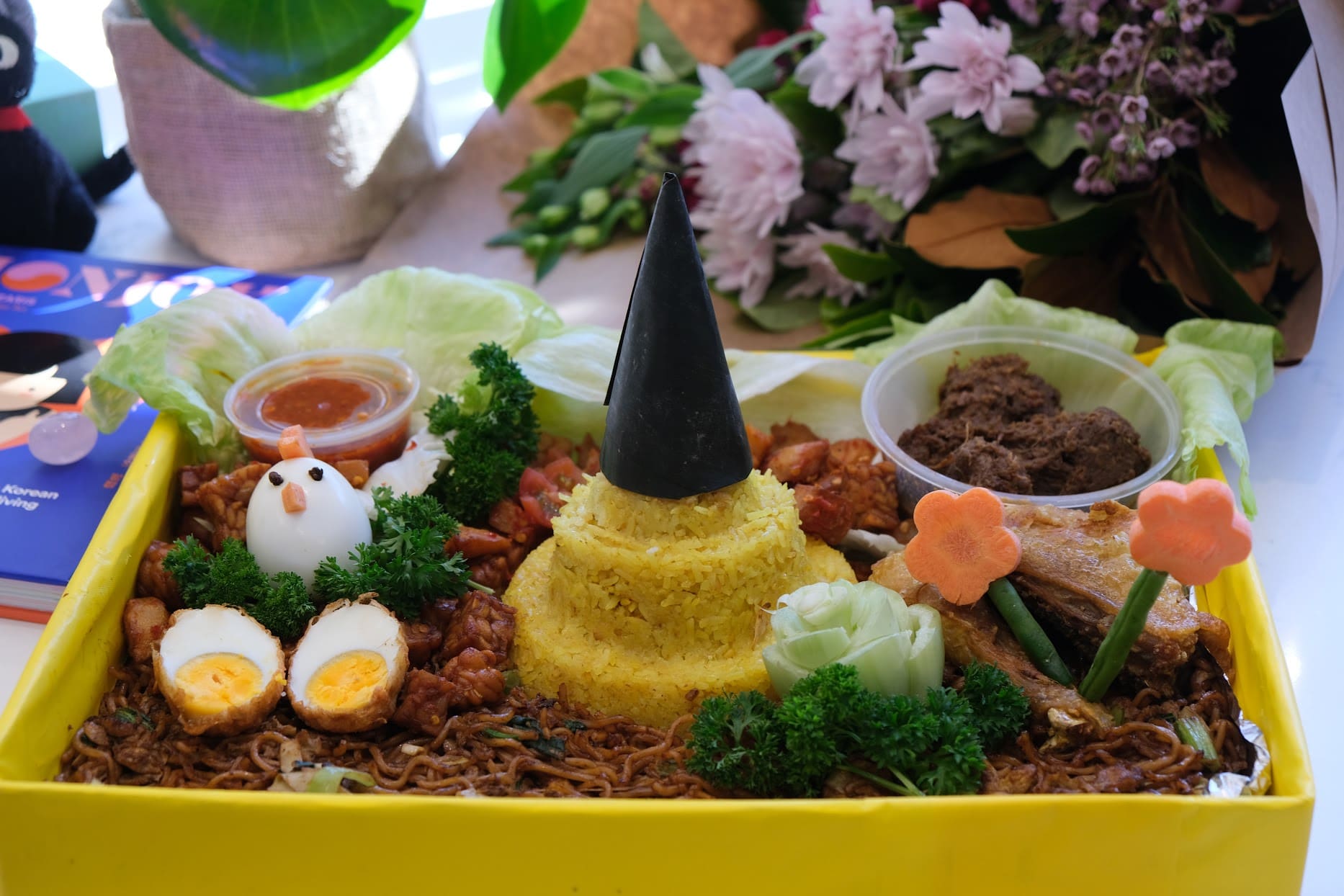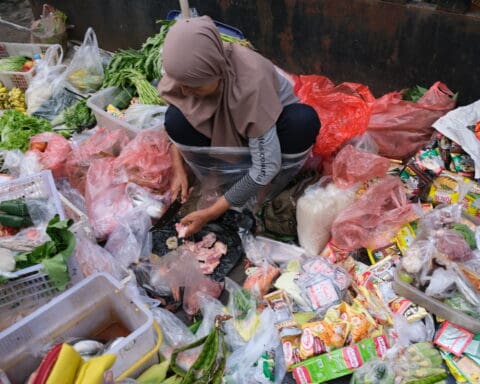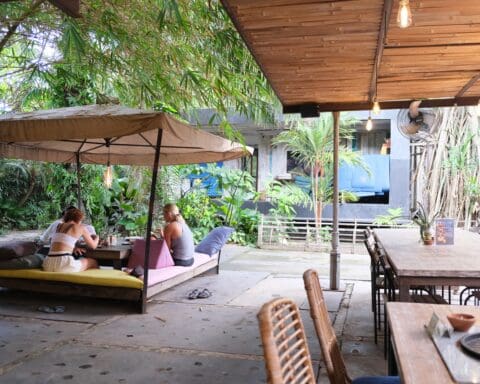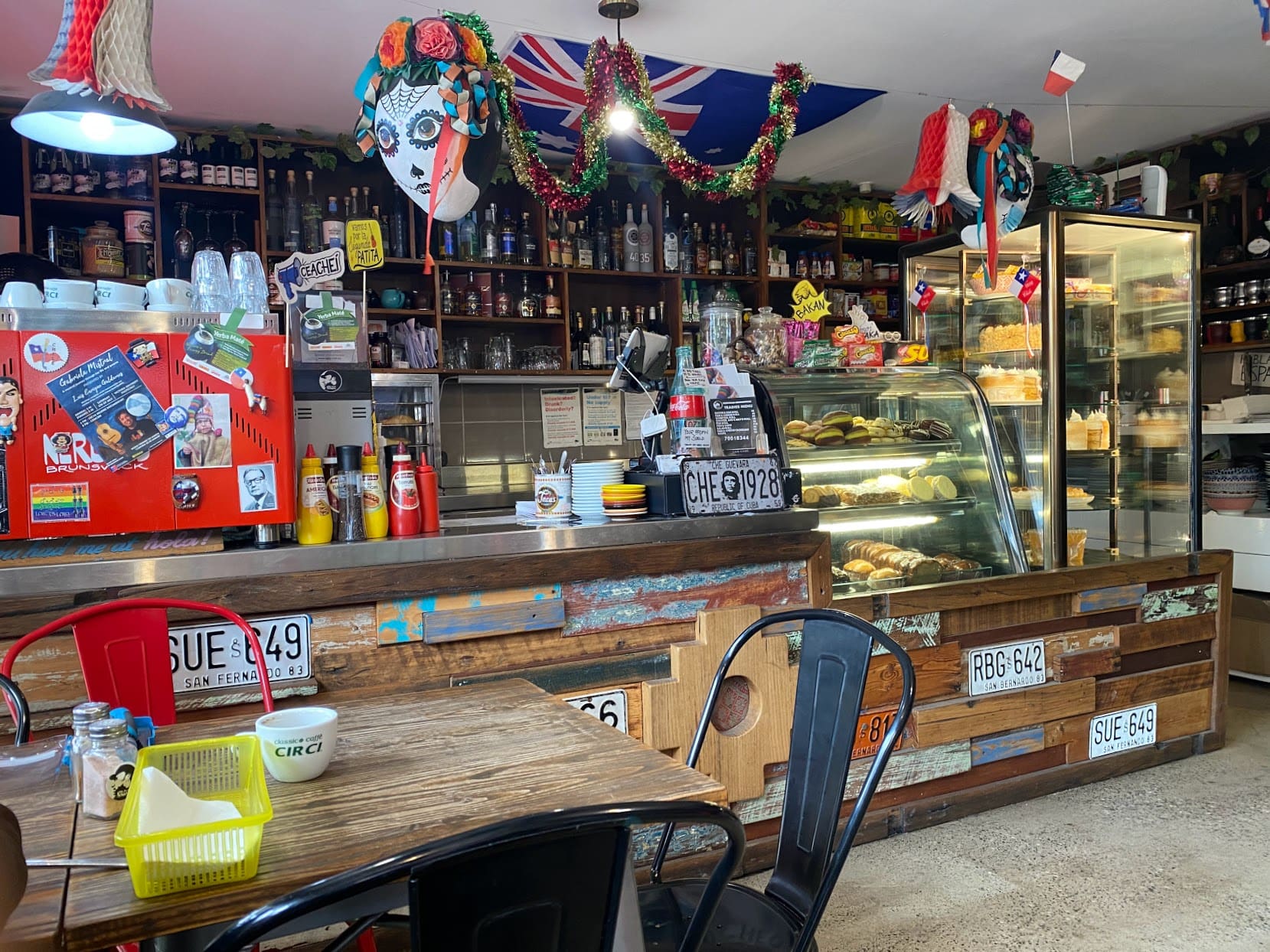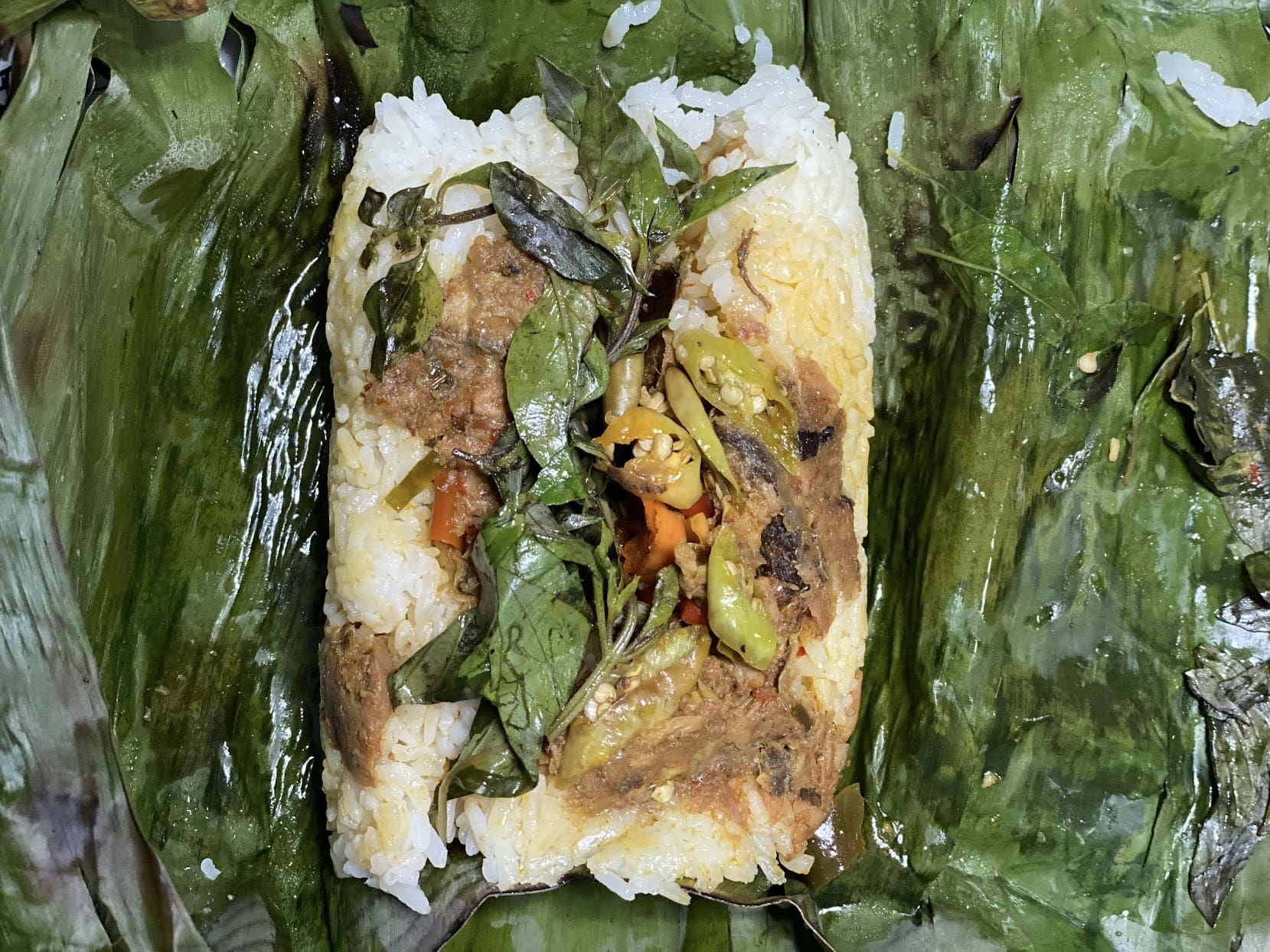I requested Nasi Tumpeng ━ the royal rice of Indonesian cuisine ━ for my birthday. It was my second birthday on lockdown; I wanted something chi-chi and celebratory and decided it had to be the iconic Indonesian cultural dish.
Nasi Tumpeng is a cone-shaped rice dish with various side dishes. There are similarities between it and other Indonesian rice-based dishes I have written about before. But more than just another Indonesian cuisine, Nasi Tumpeng is highly regarded and strongly tied to Indonesian culture and traditions.
The ceremonial dish is served on a woven container, with the rice in the middle, accompanied by must-haves such as eggs, chicken, seafood and vegetables. Each of the side dishes represents an element of earth. Meanwhile, the cone-shaped (Tumeric) rice represents the spiritual higher power. The tip part of the cone is with a tiny piece of banana leaf.
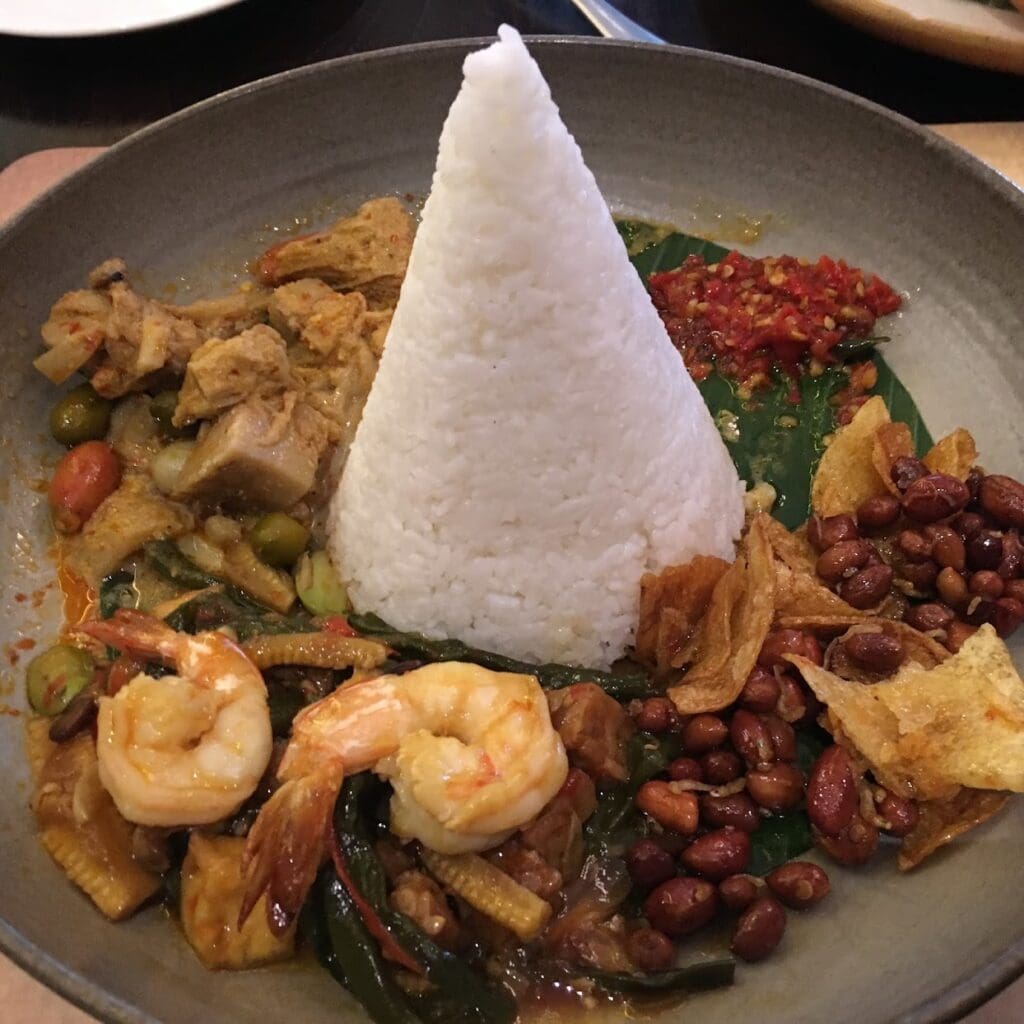
Nasi Tumpeng makes an appearance during festivals, happy events and celebration days, including special-age birthdays and Indonesian Independence Day, where sometimes they hold Nasi Tumpeng-making competitions. In addition, there are many spiritual beliefs associated with it. From it being an offering to the God and Goddess in Hindu culture, a thanksgiving dish for a good harvest season, to different varieties of it served during rites of passage. It’s also believed to be bad luck to cut the cone rice in half.
Reflecting on all the Indonesian rice-based cuisine I have enjoyed eating, it might be the one I have eaten the least. I want to say Amma made it once for my birthday, but it could just be my wishful thinking playing tricks on my memory. Nevertheless, we Indonesians are proud of Nasi Tumpeng, and I am glad to introduce Fafa to a side of Indonesian culture and cuisine he wasn’t exposed to.
Follow me on Instagram@KultureKween for more recent updates.
